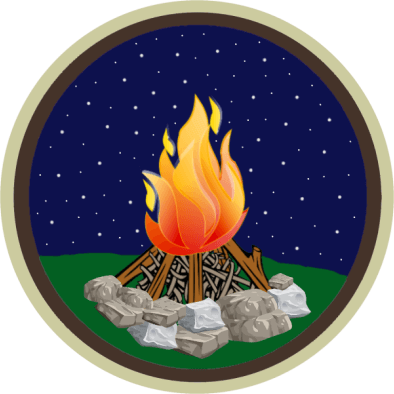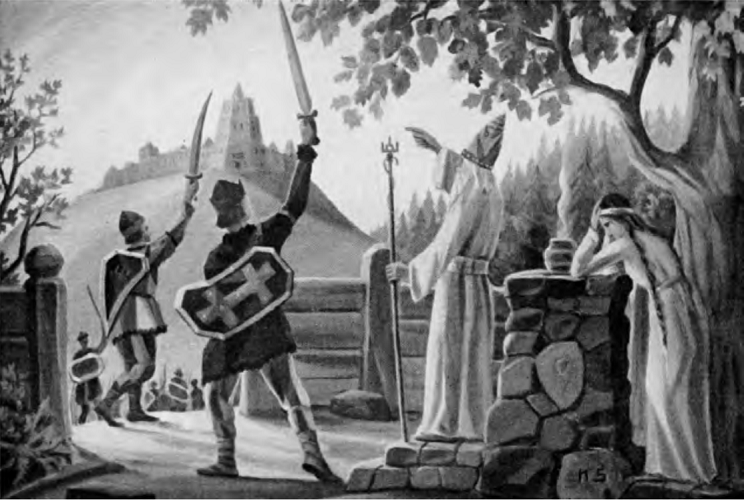ETERNAL FIRE

The control of fire by early humans was a turning point in the technological evolution of human beings. Fire provided a source of warmth, protection from predators, a way to create more advanced hunting tools, and a method for cooking food. These cultural advances allowed human geographic dispersal, cultural innovations, and changes to diet and behavior. Additionally, creating fire allowed human activity to continue into the dark and colder hours of the evening.
Ancient Rome
The Goddess associated with eternally burning fire was Vesta. Where the majority of temples would have a statue, that of Vesta had a hearth. The fire was a religious center of Roman worship, the common hearth (focus publicus) of the whole Roman people. The Vestals were obliged to keep the sacred fire alight. If the fire went out, it must be lit from an arbor felix, auspicious tree, (probably an oak). Water was not allowed into the inner aedes nor could stay longer than strictly needed on the nearby premises. It was carried by the Vestales in vessels called futiles which had a tiny foot that made them unstable.
Persia
Fire commemoration and worship has a long history among the Indo-Iranians, perhaps going back to the Proto-Indo-European religion. The Indo-Iranians believed that fire was the essence of life and existence. The tradition remains among Muslim Iranians in later periods to ignite candles or put the light on the graves of the dead. However amongst Parsis and Iranian Zoroastrians there are consecrated Fire Temples where fire by a complex consecration rituals is installed and kept ever burning to this day.
Ancient Greek historians refer to the Persians' attention to the gods of the sun, moon, earth, water and fire. Strabo's Geographica, Book XV, Chapter 3:
But it is especially to fire and water that they offer sacrifice. To fire they offer sacrifice by adding dry wood without the bark and by placing fat on top of it; and then they pour oil upon it and light it below, not blowing with their breath, but fanning it; and those who blow the fire with their breath or put anything dead or filthy upon it are put to death.
Vedic Hinduism

I laud Agni, the chosen Priest, God, minister of sacrifice, The hotar, lavishest of wealth. Worthy is Agni to be praised by living as by ancient seers. He shall bring. hitherward the Gods.
We choose Agni the messenger, the herald, master of all wealth, Well skilled in this our sacrifice. With callings ever they invoke Agni, Lord of the House, Oblation-bearer, much beloved.
Agni is the guest of the house and is always present in the form of domestic fire. Two sticks were rubbed together and the god Agni was born magically.
Albania
En or Enji is the reconstructed name of the fire god in the Albanian pagan mythology, who is thought to have been worshipped by the Illyrians in antiquity and to have been the most prominent god of the pantheon in Roman times. The name continues to be used in the Albanian language for Thursday (e enjte). Another name of a fire god worshipped in Northern Albania until recent times is Verbt, while the name hyj meaning "burn, glow" is used uncapitalized to refer to the deities and the stars, and capitalized to refer to the Supreme Being.
In Albanian folk beliefs, Nëna e Vatrës is the protector of the vatër, the domestic fireplace. It is said that the fireplace should be cleaned in the evening. If it is left uncleaned, Nëna e Vatrës becomes angry. At feasts, people used to practice sacrificial offerings to the deity throwing some of the food they prepared into the fire and around the hearth. The first element nënë/nanë or ëmë/amë means "mother", while the last element vatër/votër means "hearth", "fireplace" and is related to the Avestan atar meaning "fire".
Carpathian Mountains
Watra is a large fire with a tall wooden tripod over it. A name found especially in the Carpathians, but also outside their area. The purpose of lighting the watra is to recall the memory of people who have passed away, remembering the old times, awakening a sense of community, recalling traditions, summoning neighbors, and sometimes just evoking a specific mood. People often sang, told stories or spent time in silence at the watras. On the tripod you can prepare meals, dry clothes, etc. In the past, the term referred to fires made in huts or houses.
Lithuania

Vilnius Cathedral is Lithuania's spiritual and political center. It is thought that in pagan times this was the location of an altar, an eternal fire, or even a temple to Perkūnas.
In 1413 when the Christianisation of Samogitia was begun, Grand Dukes Jagiełło and Vytautas also directed their attention to a temple “beyond the Nevėžis” where they burnt a tower on top of the highest hill in which sacred fire was guarded and cut down the woods that were considered sacred (Vėlius ed. 1996: 559). The action, which had the aim of making the Samogitians wish to accept Christianity, was undoubtedly directed against their temples of the highest rank (Vaitkevičienė and Vaitkevičius 2001: 312-3).
Old Prussians
According to Peter von Dusburg, writing in 1326, the name Romuva is derived from the word Rome. He describes the Kriwe as a powerful priest who was held in high regard by the Prussians, Lithuanians, and Balts of Livonia. His messengers were recognized by a certain rod or other insignia. He guarded the eternal sacred flame and could look into the destiny of deceased followers. He received one third of any booty taken by pagan warriors. Kriwe-Kriwajto had dozens of lower rank priests, such as wajdelotas, who assisted him in the rituals and were responsible for the burning of the holy fire under the sacred oak in Romuva.
East Slavic
In Slavic mythology, Svarog, meaning "bright and clear", was the spirit of fire. The best known and dramatic among numerous Slavic Pagan fire rituals is the jumping over the bonfire on the Ivan Kupala Day.
Celts
During the celebration of Samhain (1st of November), the Celtic New Year and the beginning of the long, dark half of the year, the entire village would extinguish their hearth fires and ceremonially relight them from the King's fire. This fire was ritually lit by the King's chief Druid.
The summer solstice, or Alban Heruin, was the longest day of the year. Observed on the 21st of June, it was the time when the Sun reached its zenith and cast three rays to light the world. Alban Heruin, or "The Light of the Shore," is also referred to as Litha or Midsummer's Day. It was traditionally celebrated out in the forest with picnics, games, and a large bonfire.
Germania in 60 BC
In "Commentarii de Bello Gallico" Julius Caesar states:
The Germans differ much from these usages, for they have neither Druids to preside over sacred offices, nor do they pay great regard to sacrifices. They rank in the number of the gods those alone whom they behold, and by whose instrumentality they are obviously benefited, namely: the sun, fire, and the moon. They have not heard of the other deities even by report. Their whole life is occupied in hunting and in the pursuits of the military art. From childhood they devote themselves to fatigue and hardships.
Article created on the 16th of November 2020.
